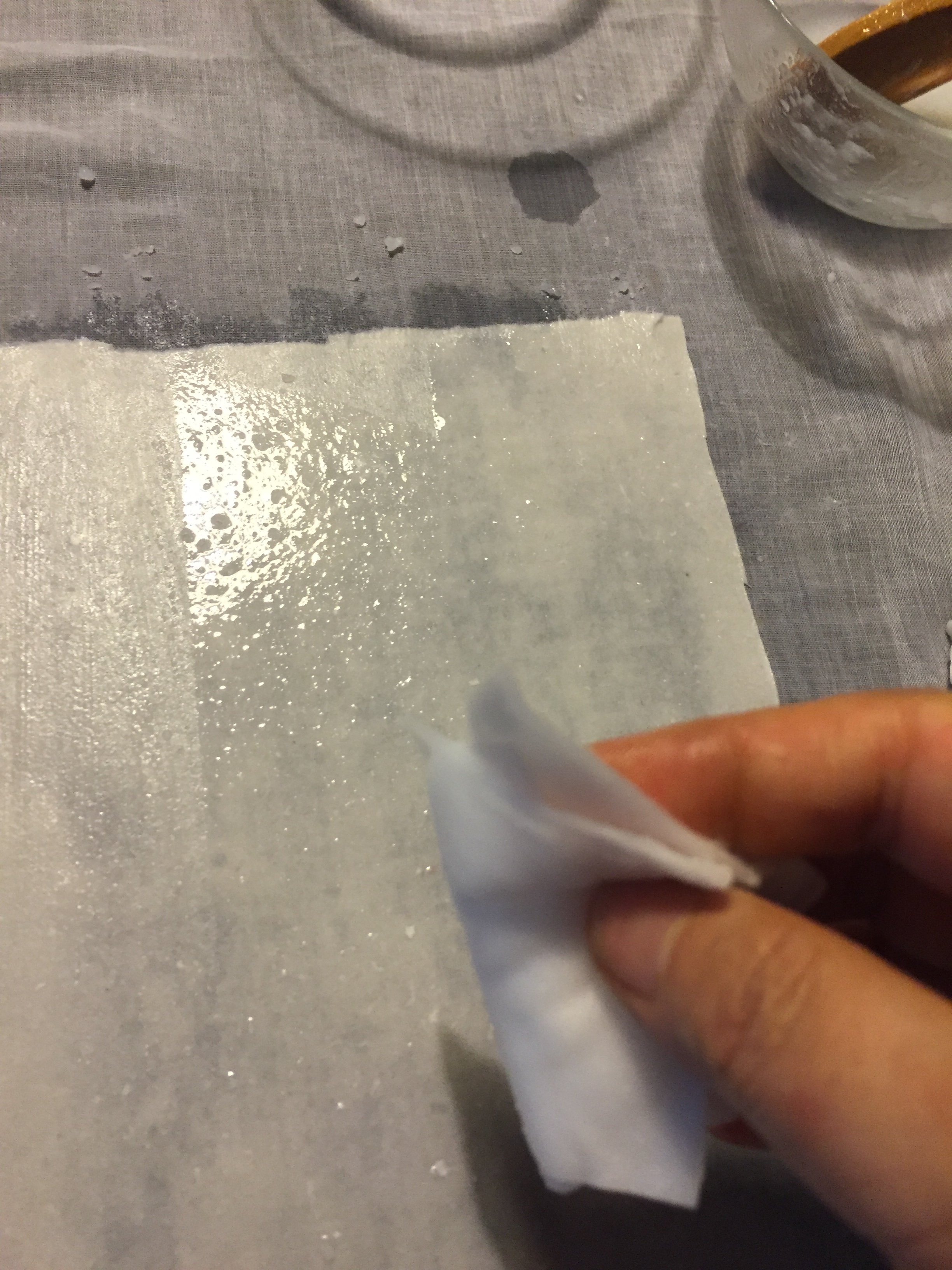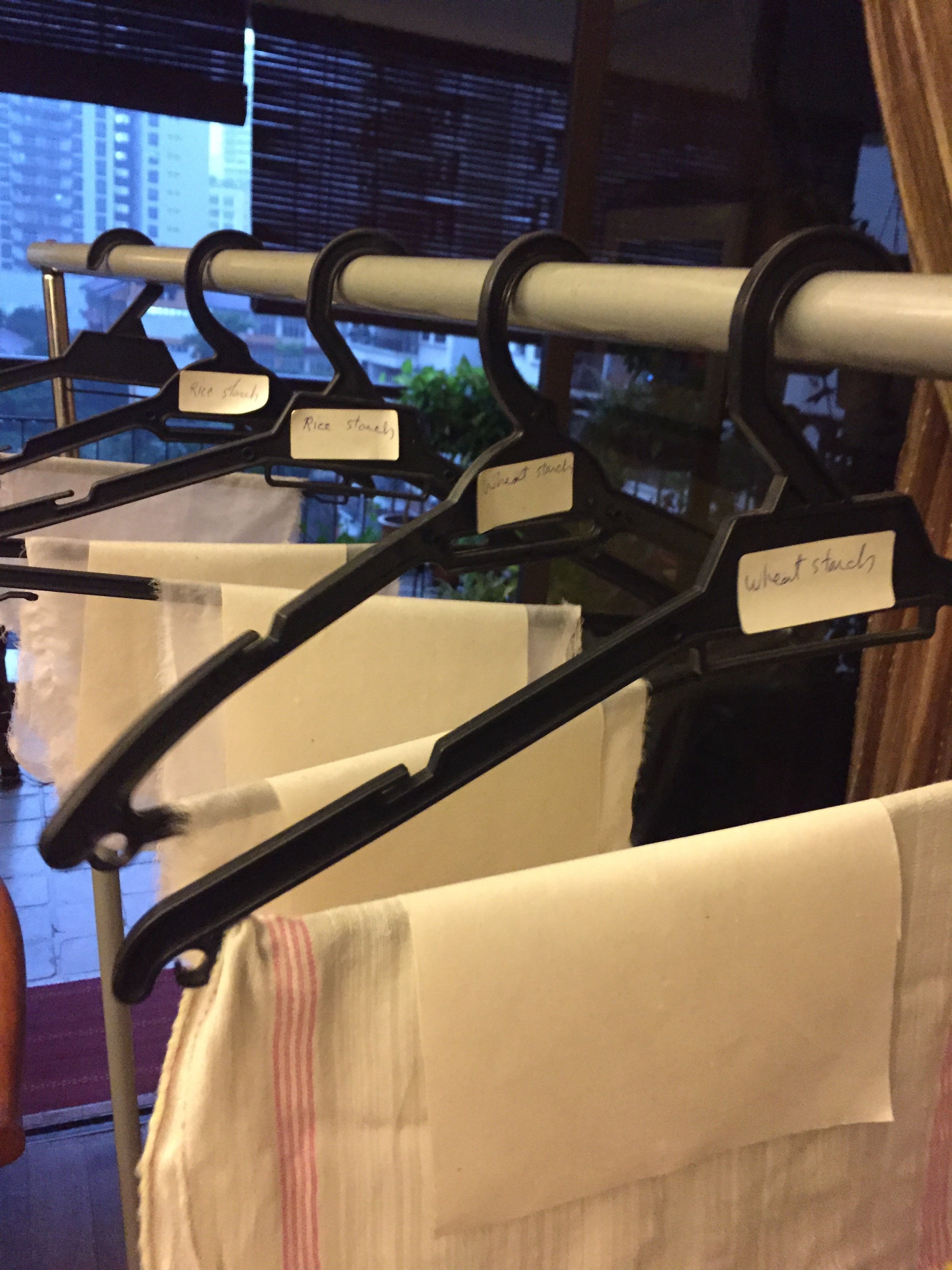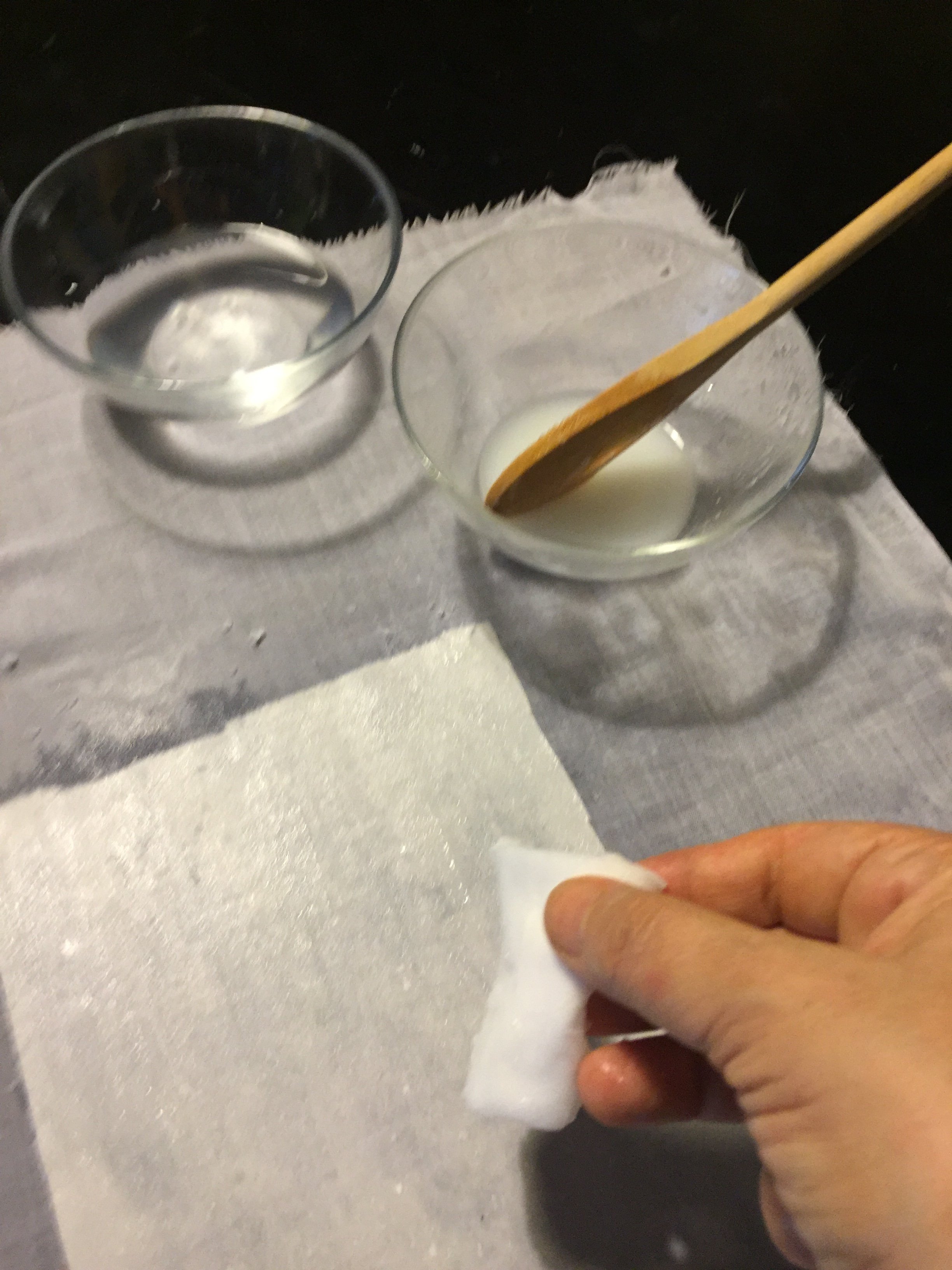RICE STARCH (NEŠĀSTE BERENJ)
The granules in rice starch are polygonal in shape and are the smallest among common starches; between 4 and 8 microns in diameter. This makes rice starch paste smoother than wheat starch paste. In comparison, rice starch paste forms a weaker but more stable film than wheat starch pastes.
Recipes:
In historical recipes, the term "nešāste" is not mentioned for making size from rice, and the process is mainly described to make size from a rice mush obtained by cooking rice. Specific references to the use of rice for sizing paper can be found in various sources such as Jamali-ye Yazdi’s Farrokhnameh (580 A.H./1184 A.D), Teflisi’s Bayān al-Ṣenāʿat (12th century), Simi’s "Resaleh-ye Joharrieh (837 AH/1433 A.D.), and in "Resāle dar Bayān-e Kāḡaḏ Morakkab va Ḥall-e Alvān (15th century), Resale-ye buqalamun (887-924 A.H./1482-1518 A.D.). and "Ḥaliyyat al-Ketāb" of Majmu’at al-sanaye. (1005 A.H. /1596 A.D). The first two sources describe the technique in almost the same manner. Farrokhnameh (580 A.H./1184 A.D), presents the recipe as follows:
بستاند برنج سپید پاکیزه. پس (یکی پاتیله ای بیارد چنانک هیچ چربش بر آن نباشد. پس آن برنج نیک بپزد و به دست بمالد. پس به رکوی (پاکیزهٔ) ستبر سخت بپالاید. پس به کاغذ در مالد، یک دو دفعه. آنگه جایی هموار بنهد تا خشک شود. آنگه مهره زند
Take some white and clean rice. Then bring a wide container free of oil and cook the rice thoroughly, followed by rubbing it with the hand. Then pass the rice mush through a thick cloth and apply it to the paper one or two times. Then place the sized paper on a flat surface to dry.
In Bayān al-Ṣenāʿat, Teflisi in 12th century uses the term "gune dādan" for sizing (āhār dādan) and describes the same technique mentioned above but in more detail as follows:
گونه دادن کاغذ: اگر خواهد که کاغذ را گونه دهد تا مهره اش زند، بستاند برنج رسیده و در پاتیلهٔ پاک وی را بجوشاند چنانکه هیچ بوی چربش ندارد. پس آب در وی کند چندانکه زبرش برآید و لختی بجوشاند. وزان پس وی را بدست بمالد و برکوی سطبر آنرا بپالاید و بر کاغذ از وی یک بار یا دو بار بمالد. پس آن کاغذ را بجایی هموار بنهد تا خشک شود. پس بآبگینه ویرا مهره زند تا نیکو گردد
Sizing paper: If you wish to size the paper for burnishing, take some ripened rice and boil it in a clean, oil-free pot to ensure no oily residue. Add water to it until it becomes coarse and brings it to a boil until it thickens. Afterward, rub it with your hands, pass the mush through a thick cloth, and apply it once or twice onto the paper. Then, place the sized paper on a smooth surface to dry. After it dries, burnish it with a glass to make it smooth and fine.
In Ḥaliyyat al-Ketāb, the term daru dādan is used for sizing (āhār) and the process of making rice mush as a sizing material is stated as follows:
در صنعت دارو دادن کاغذ که مانند بغدادی شود ونشف نکند بیارد برنج سفید اعلا ، وبا نمک می مالند وبه آب می شویند تا سپید وروشن شود وطعم نمک از او برود وآنگه قدری آب در او کنند ویک شبانروز بنهند تا نرم گردد چنانکه به انگشت بمالند حل شود. پس در هاون کند وبه آب می سایند وآنچه نرم می شود در ظرفی پاکیزه کند تا جمله جمع شود آنگه بپالایند ودر پاتیله کنند وبه آتش نرم می جوشانند وبه چوبی می جنبانند تا غلیظ شود آنگه بنهد تا سرد شود. بعد از آن کاغذ را بر بالای تخته ای پاکیزه بگستراند واز این دارو به رکویی سفید پاکیزه بر کاغذ می مالند وکرباس دیگر برآفتاب بگسترانند کاغذ را بر بالای آن افکنند تا خشک شود، آنگه لعاب بدهند ومهره زنند که بسی لطیف باشد. دیگر از هر رنگ که خواهند در میان این دارو کنند که کاغذ رنگین نیکو آید وکسی از بغدادی فرق نتواند کرد
In the sizing practice, to create paper resembling Baghdadi paper that doesn't become brittle, start with the finest white rice. Rub it with salt and wash it thoroughly until it's clean, ensuring the elimination of the salt's taste. Add water and let it soak for an entire day until it softens and dissolves when rubbed. Grind the soaked rice in a mortar, adding water. Transfer the soft mixture into a clean pot, allowing it to come together. Place it in a large copper vessel. Boil it over low heat, stirring with a wooden stick until it transforms into a paste. Let it cool.
Next, lay the paper on a wooden board and cover the board with a clean muslin cloth. Size the paper over it with the paste. Place another cloth in the sun, lay the paper on it, and let it dry. Finally, burnish the paper until it achieves a smooth texture. Dyes can be added to the paste to create colored paper. By employing this method, distinguishing this paper from Baghdadi paper becomes nearly impossible.
In Resale-ye buqalamun, the term āb dādan for sizing (āhār), is used and the process of making rice mush as a sizing material is described. In the recipe beside rice mush, the extract of cooked rice bran (sabus) is also mentioned, as another material for paper size as follows:
بستانند برنج سفید و بپزند و تُنُک کنند به آب و در ورق کاغذ بمالند و بگذارند تا خشک شود و مهره بمالند. و بعضی مردمان سبوس می پزند و آب او میگیرند و به کاغذ می خورانند، همچنان که وصف آن کردم بسیار خوب خواهد شد
White rice is cooked and mixed with water, then applied to paper. Afterward, it is dried and burnished. Alternatively, some individuals cook rice bran, extract its water, and use it to size the paper before proceeding with the drying and burnishing steps, as mentioned earlier. The results are expected to be very satisfactory.
Experiments:
In traditional technique, take 1 cup, approximately 200 grams, of white rice, rub it with salt, and wash it thoroughly until it's clean, ensuring all the salt is removed. Add water and let it soak overnight until it softens. Place it in a mortar or electric grinder to grind it with some water. Transfer the soft mixture into a pot and boil it over low heat for 20 to 30 minutes, stirring with a wooden stick until it transforms into a fine paste. Let it cool and filter the paste.
Lay the paper on a wooden board and cover the board with a clean muslin cloth. First moister the paper then and size the paper with the rice paste. Place another cloth in the sun, lay the paper on it, and let it dry. Finally, burnish the paper until it achieves a smooth texture.
Alternatively you can use rice starch and follow the experiment that is explained in making wheat starch paste.






